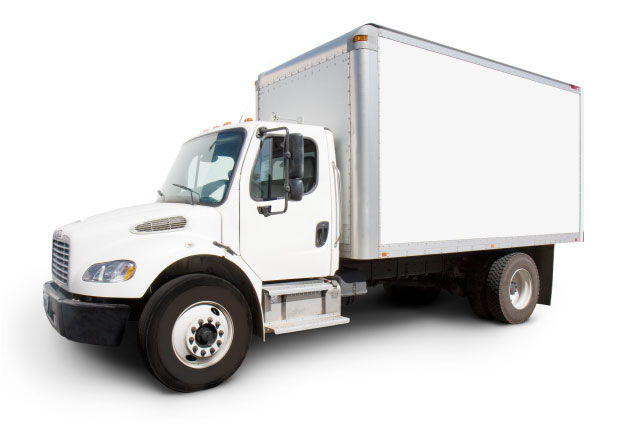Learn to Lift Heavy Objects Safely on Your Own
Posted on 09/06/2025
Learn to Lift Heavy Objects Safely on Your Own
Lifting heavy objects is a common necessity in many aspects of life--from moving houses, rearranging furniture, to certain job requirements. However, improper techniques can result in injuries or lasting health problems. Learning to lift heavy objects safely on your own is a crucial skill that protects your body and ensures that your tasks go smoothly. In this comprehensive guide, you'll discover the best ways to handle heavy lifting independently, strategies to prevent injury, and expert tips for mastering the art of moving weight securely.

Why Lifting Heavy Objects Correctly Matters
Before delving into safe lifting techniques, it's vital to understand why proper form and precautions are necessary. Lifting with improper posture or using the wrong muscles can cause:
- Back injuries such as herniated discs or muscle strains
- Knee and joint pain
- Shoulder injuries
- Long-term spinal problems
According to health and safety statistics, back injuries account for a significant portion of workplace incidents, many of which are preventable with correct lifting techniques.
Understanding Lifting Mechanics
Knowledge of your body's biomechanics is the foundation of safe heavy lifting. The major principle is to use your body's natural levers efficiently, distributing the load and protecting vulnerable areas. Here are some key mechanics:
- Engage your legs: Your legs have strong, endurance-focused muscles--ideal for supporting weight.
- Keep the load close: Holding an object near your center of gravity reduces the stress on your back.
- Straight back, bent knees: This classic advice aligns your spine for maximum stability.
- Avoid twisting: Rotational movements under load increase the risk of injury.
Muscles Involved in Lifting
Effective and safe lifting relies on several muscle groups:
- Quadriceps (front thighs): for straightening your legs from a squat position
- Glutes: provide powerful hip extension
- Hamstrings: assist with lifting and stabilizing the legs
- Core muscles: keep your trunk stable and protect your spine
- Upper back and shoulders: help you maintain grip and posture
Preparing Yourself Physically Before Lifting
Just like athletes warm up before a game, you should prepare your body for lifting heavy items. Here's how:
- Stretch: Focus on your hamstrings, quads, back, and shoulders.
- Warm up: Light cardio for 5-10 minutes boosts circulation and muscle pliability.
- Wear appropriate clothing: Non-restrictive clothes and closed-toe, non-slip shoes reduce the risk of tripping or losing balance.
Planning the Lift: Think Before You Act
Preparation is just as important as strength when it comes to heavy lifting on your own. Follow these crucial steps before you move any object:
- Assess the weight and size of the object. If it's too heavy or awkward, consider asking for help or using lifting aids.
- Clear your path. Remove obstacles, rugs, or clutter.
- Plan your route and final destination. Know exactly where you want to place the item and that the destination is ready.
- Estimate the time needed. Avoid rushing, as haste can lead to mistakes.
Mastering Proper Lifting Techniques
The Step-by-Step Guide to Lifting Heavy Objects Solo
Follow this systematic approach to lift heavy objects safely on your own:
-
Stand Close to the Object
Position your feet shoulder-width apart and as close as possible to the object. This provides a stable base and reduces the distance you need to lift. -
Bend at Your Hips and Knees, Not Your Waist
Squat down while keeping your back straight and chest proud. Your core should be engaged, and your head facing forward. -
Grip Firmly
Use both hands to get a secure grip. If possible, wear work gloves for better friction and comfort. -
Lift With Your Legs
Push through your heels and straighten your legs, keeping your back and arms steady. Avoid using your back to initiate the lift. -
Keep the Load Close to Your Body
Hold the object at waist height, as close to your torso as possible. This reduces leverage and protects your lower back. -
Move Smoothly
Take small, deliberate steps. Do not twist your body; if you need to turn, pivot with your feet. -
Set Down Objects Carefully
To put the load down, reverse the lifting process: squat with your hips and knees, keeping your back straight, and gently lower the item.
Common Mistakes to Avoid When Lifting Heavy Weights Alone
- Using your back instead of your legs
- Twisting or rotating your spine while carrying
- Ignoring pain or discomfort
- Lifting and carrying objects above shoulder height
- Trying to lift objects that are too heavy (Err on the side of caution)
Essential Tools and Equipment for Solo Heavy Lifting
Even if you're lifting by yourself, certain devices can help make lifting safer and easier. Consider these options:
- Dollies and hand trucks: Ideal for moving heavy boxes, appliances, or furniture.
- Lifting straps and harnesses: Distribute weight more evenly, reducing the load on your back.
- Furniture sliders: Allow you to glide heavy items across floors with minimal effort.
- Back support belts: Offer additional support but should not replace proper lifting technique.
- Work gloves and sturdy shoes: Improve grip and stability, guarding against slips and drops.
Special Considerations When Lifting Alone
Handling Large or Awkward Objects Solo
Lifting big or irregularly shaped objects alone presents unique challenges:
- Break down the load: If possible, separate the object into smaller, more manageable pieces.
- Use sliding techniques: Push or pull objects along the ground instead of lifting them outright.
- Leverage corners and walls: Angle the object so you can rest part of the weight as you maneuver it.
When to Know Your Limits
Recognizing limits is a crucial aspect of lifting heavy things safely by yourself. Indicators that a load may be too much to handle alone include:
- Difficulty lifting or shifting the object from the floor
- Unstable grip or sensation of losing control
- Need to twist or bend awkwardly to get a hold on it
- Past history of injury, back pain, or poor physical health
If you encounter any of these, do not proceed alone--seek assistance or professional help. Your health is always worth more than a rushed move.
Key Points for Safe, Independent Lifting
- Plan and prepare before each lift
- Use your legs and core, keeping your back straight
- Never twist or jerk while carrying a load
- Keep objects close to your body
- Pace yourself and take breaks as needed
- Invest in the right equipment for safer moves
Preventing Injuries While Lifting Heavy Objects
Most lifting-related injuries happen when people ignore the warning signs or rush. Here are some injury prevention strategies:
- Stay hydrated: Dehydrated muscles are more prone to strains.
- Listen to your body: Stop at the first sign of pain or fatigue.
- Perform strengthening exercises: Regular core and leg workouts make future lifts easier and safer.
- Take frequent breaks: Prolonged lifting can lead to fatigue and mistakes.
Stretches & Exercises to Improve Lifting Ability
To lift heavy objects safely by yourself, incorporate the following routines into your week:- Squats: Build powerful leg and glute muscles.
- Deadlifts: For safe practice, use light weights and perfect your form.
- Planks: Strengthen your core for improved spinal support.
- Lunges: Enhance stability, flexibility, and balance.
- Dynamic stretches: Incorporate hip flexor and spine stretches before and after lifting.
After the Lift: Caring for Your Body
The work doesn't end once the object is moved. Proper post-lift care is essential for long-term health:
- Cool down: Gentle stretching can reduce muscle soreness.
- Hydrate: Replace fluids lost through physical effort.
- Apply ice if needed: At the first sign of strain or soreness, use ice packs to minimize inflammation.
- Monitor for pain: Persistent discomfort may indicate an injury; consult a medical professional if needed.

Frequently Asked Questions on Lifting Heavy Objects Alone
1. What is the maximum weight I can safely lift alone?
There is no universal answer, as safety depends on your physical condition, lifting technique, and the shape/size of the load. Most safety guidelines suggest limiting lifts to no more than 50 pounds (22.7 kg) for average adults--always assess your own ability first.
2. What should I do if I feel pain while lifting?
Stop immediately. Continuing may turn a minor tweak into a serious injury. Apply ice if you feel sharp pain, and consult a health professional if the pain persists.
3. Are lifting belts or back braces helpful?
Lifting belts can offer additional support, especially for the lower back. However, they should complement, not replace, good lifting form.
4. How can I practice safe lifting in daily activities?
Integrate these habits even when picking up groceries, laundry baskets, or children so that safe lifting techniques become second nature.
Conclusion: Empower Yourself to Move Heavy Objects Safely
Lifting heavy objects without risk is entirely possible when you understand your body and follow the right strategies. Always plan ahead, use sound technique, and make the most of available tools. Apply the knowledge from this article every time you face a heavy lift, and you'll protect your back and joints for years to come. Remember: learning to lift heavy objects safely by yourself isn't just smart--it's essential for lifelong health and independence.





